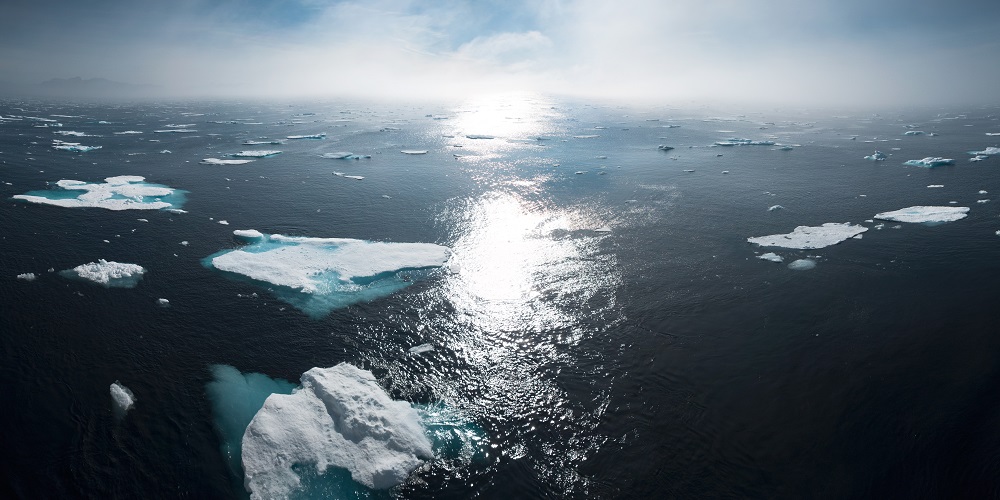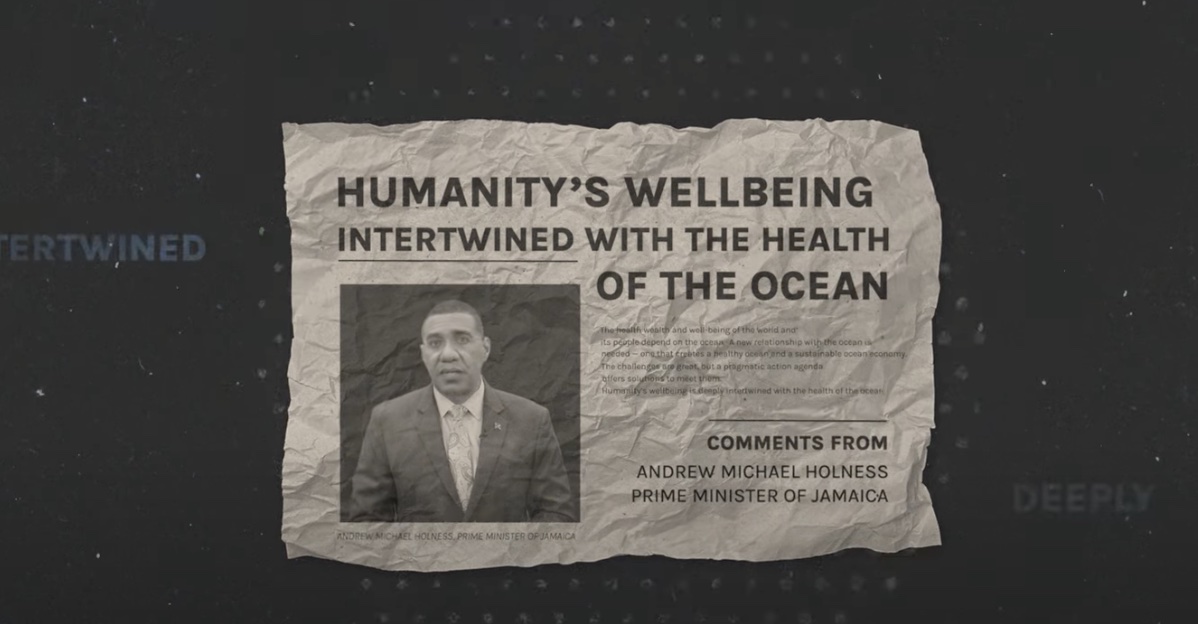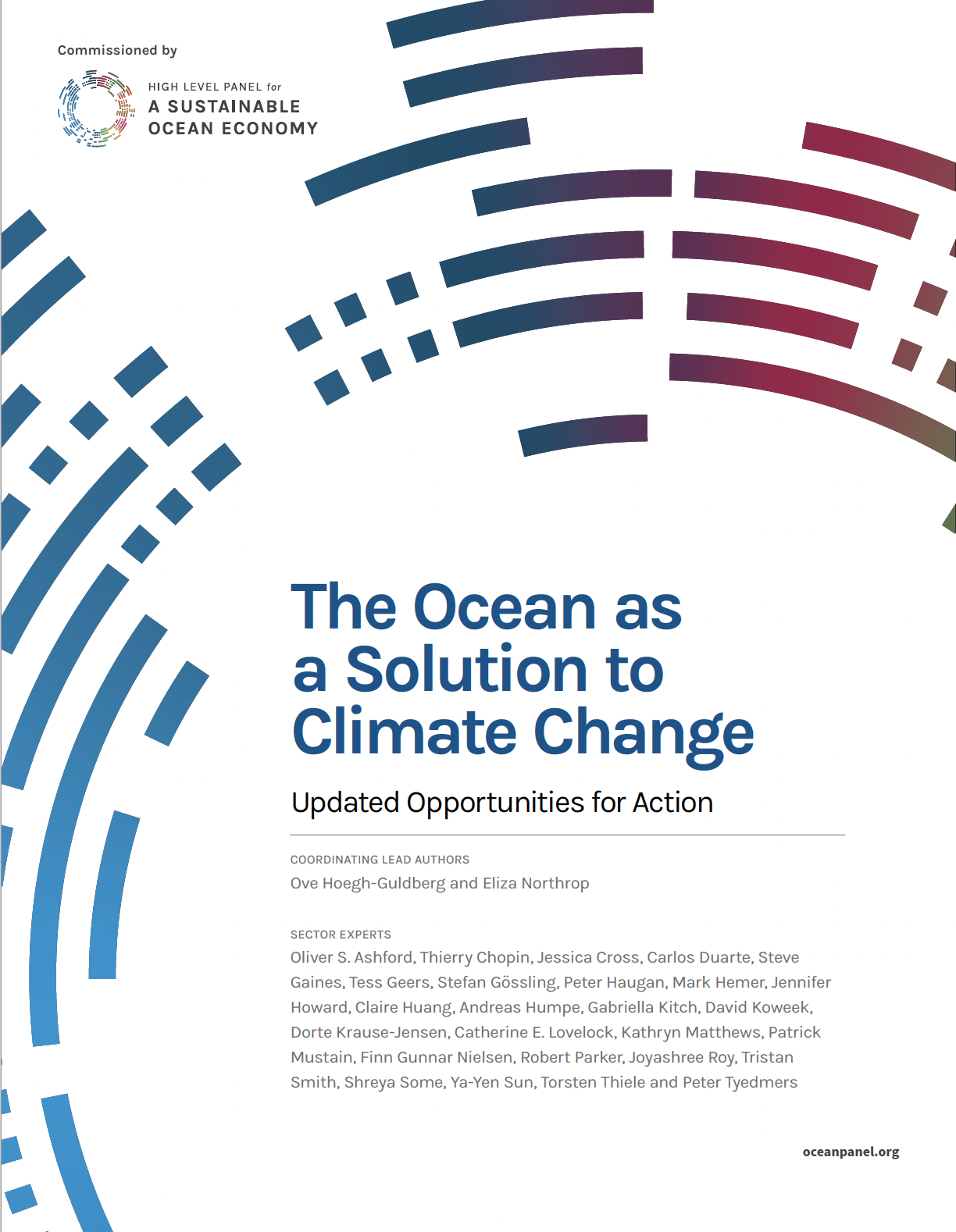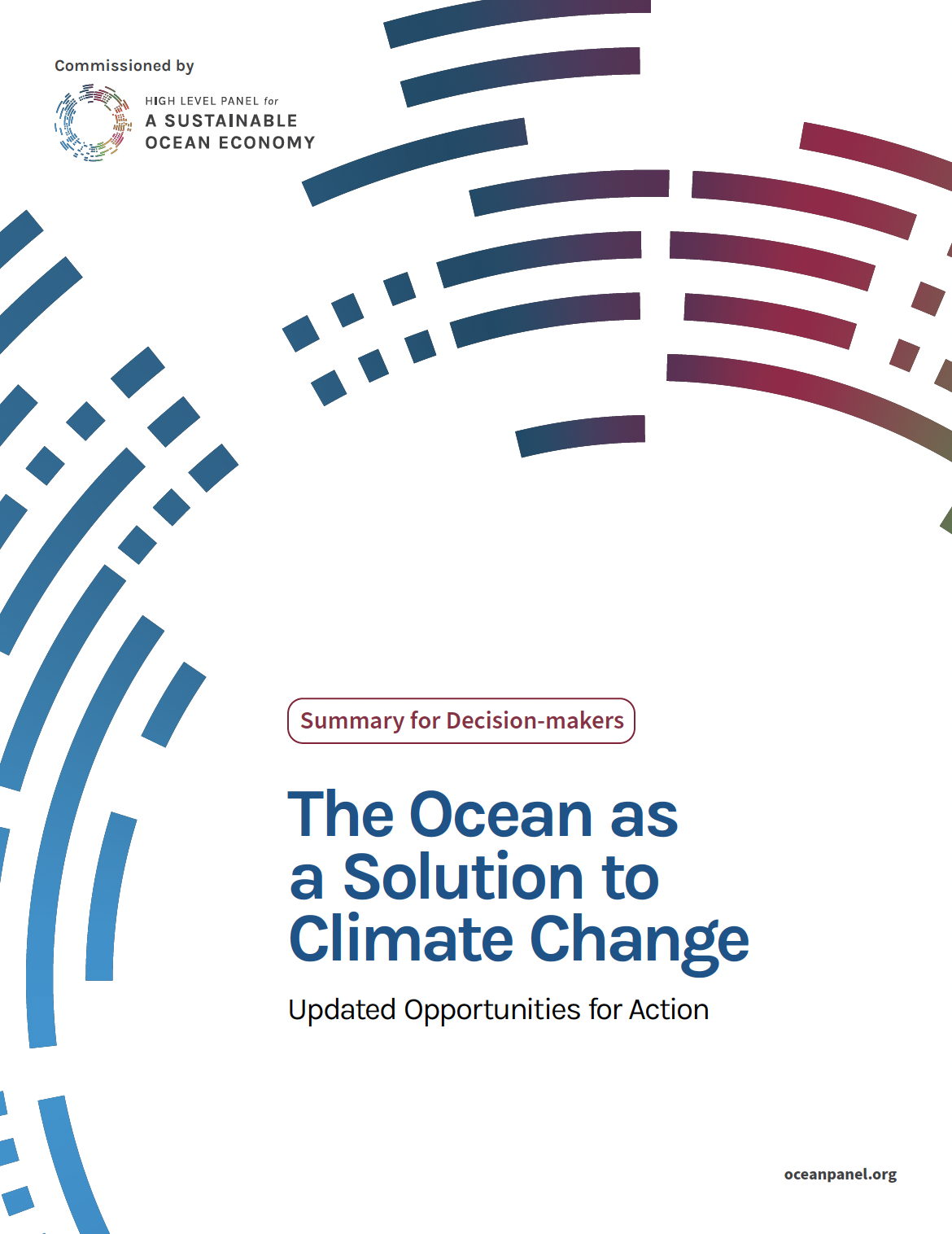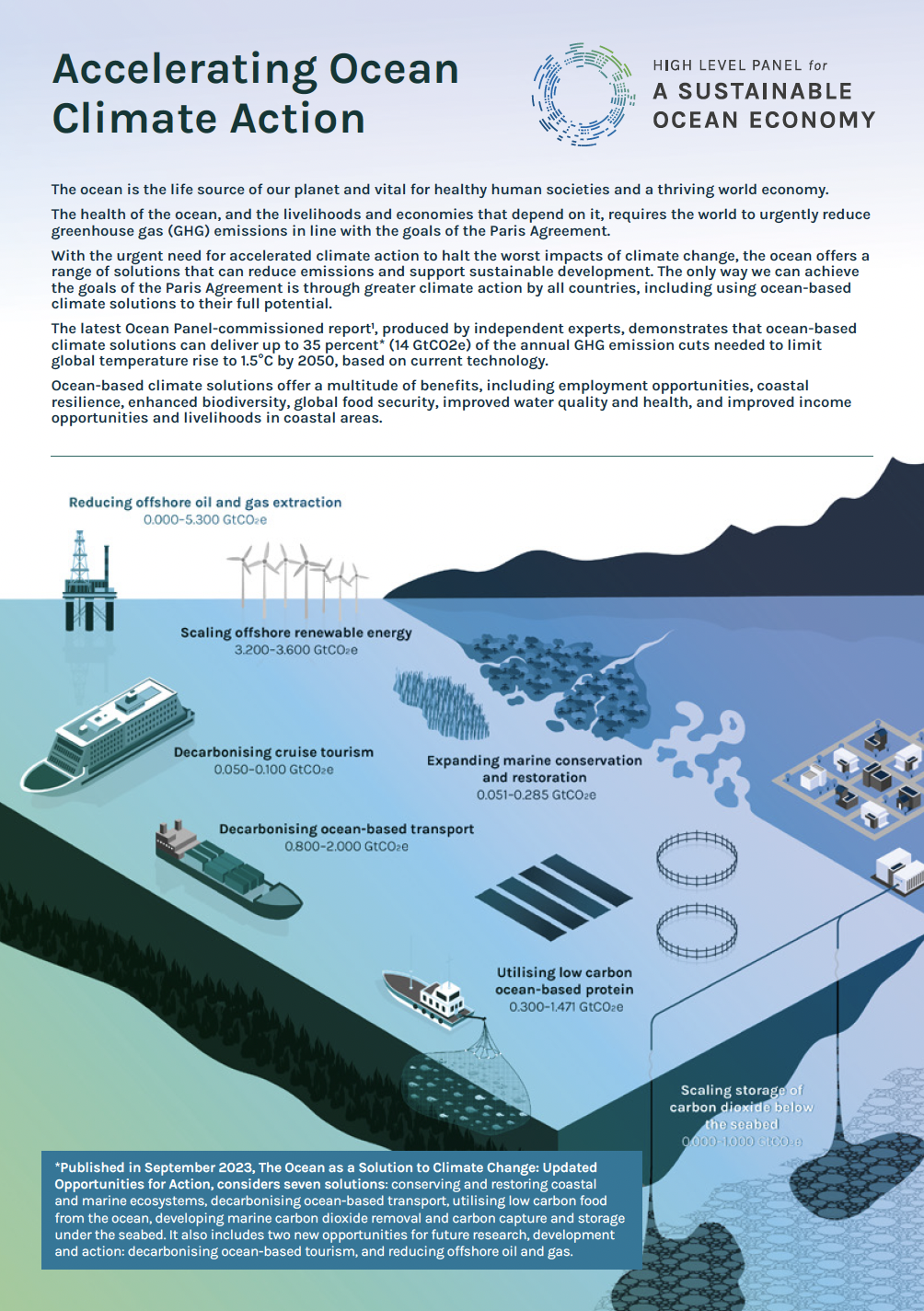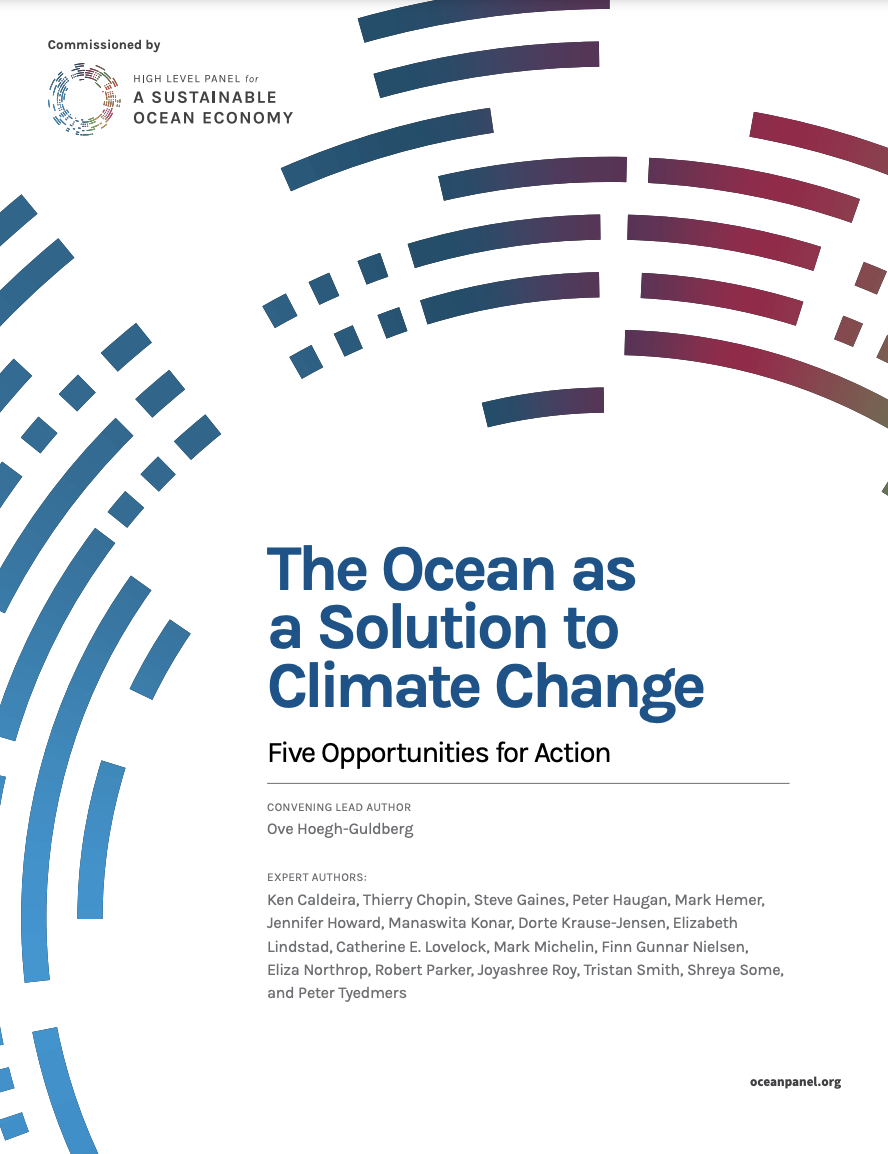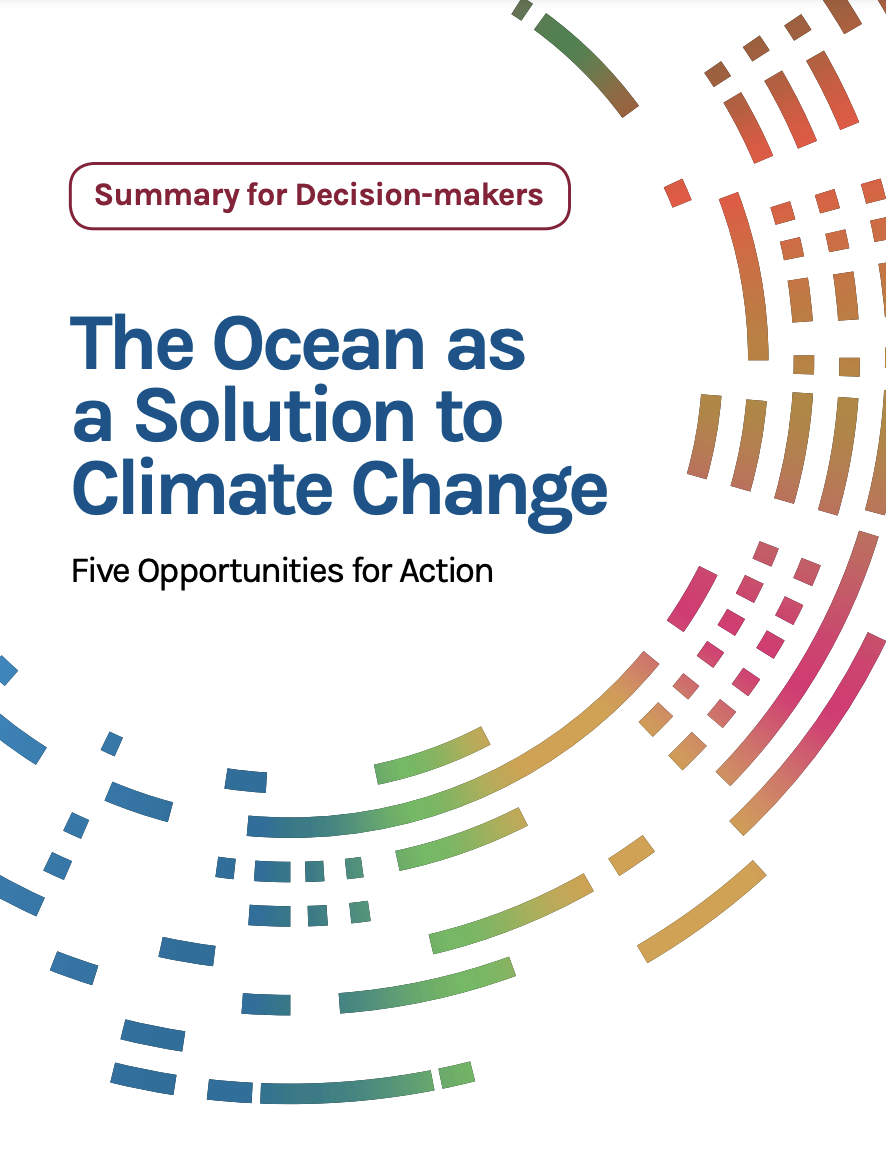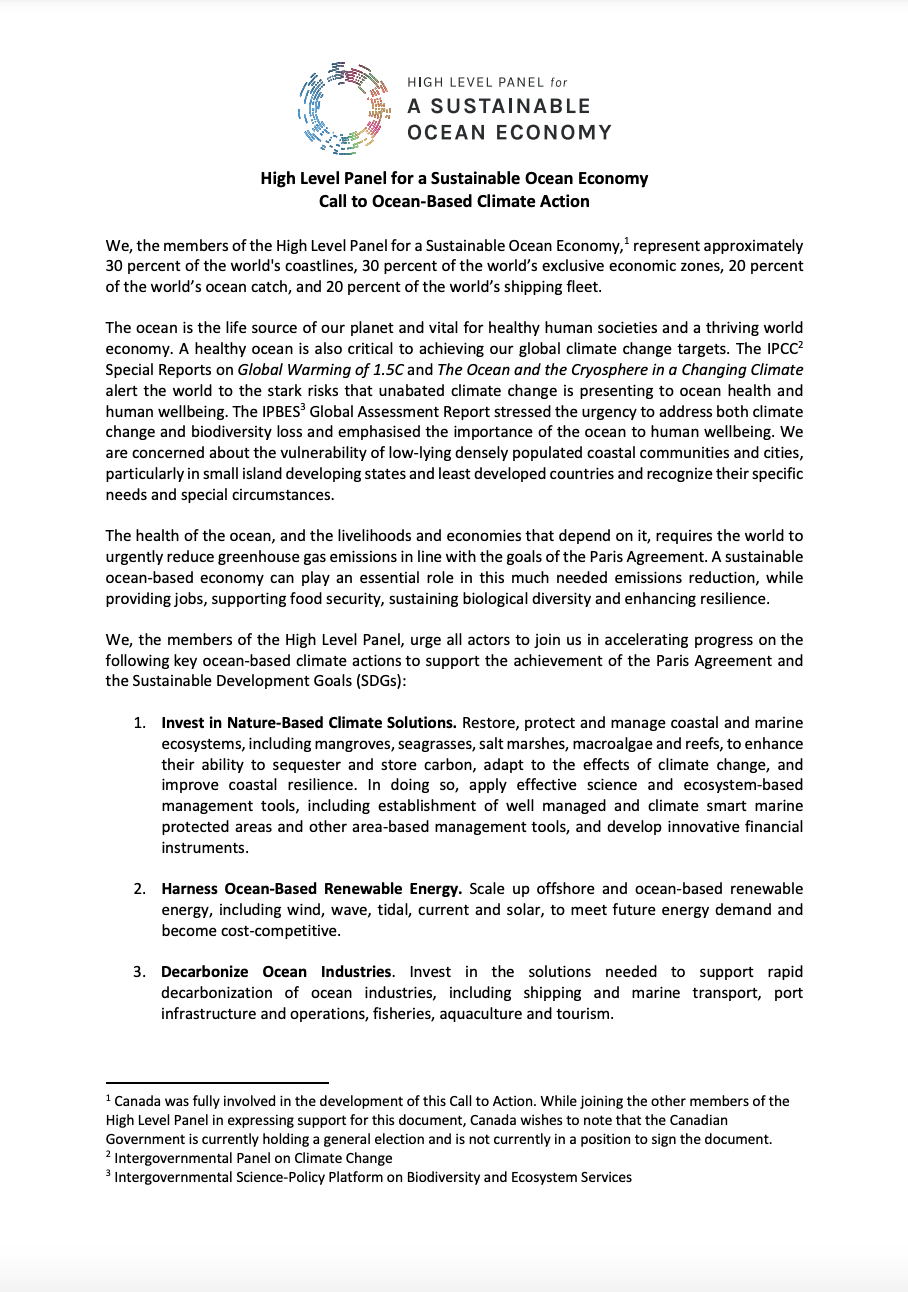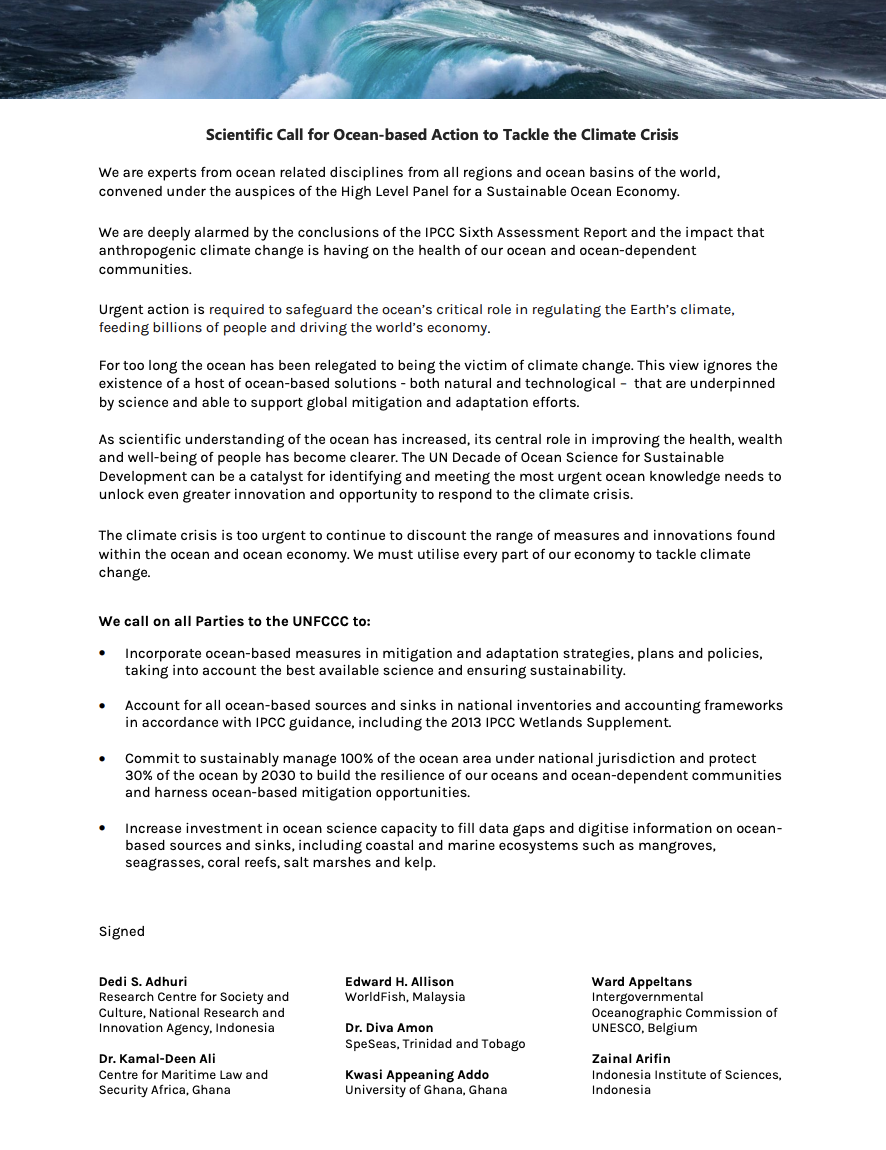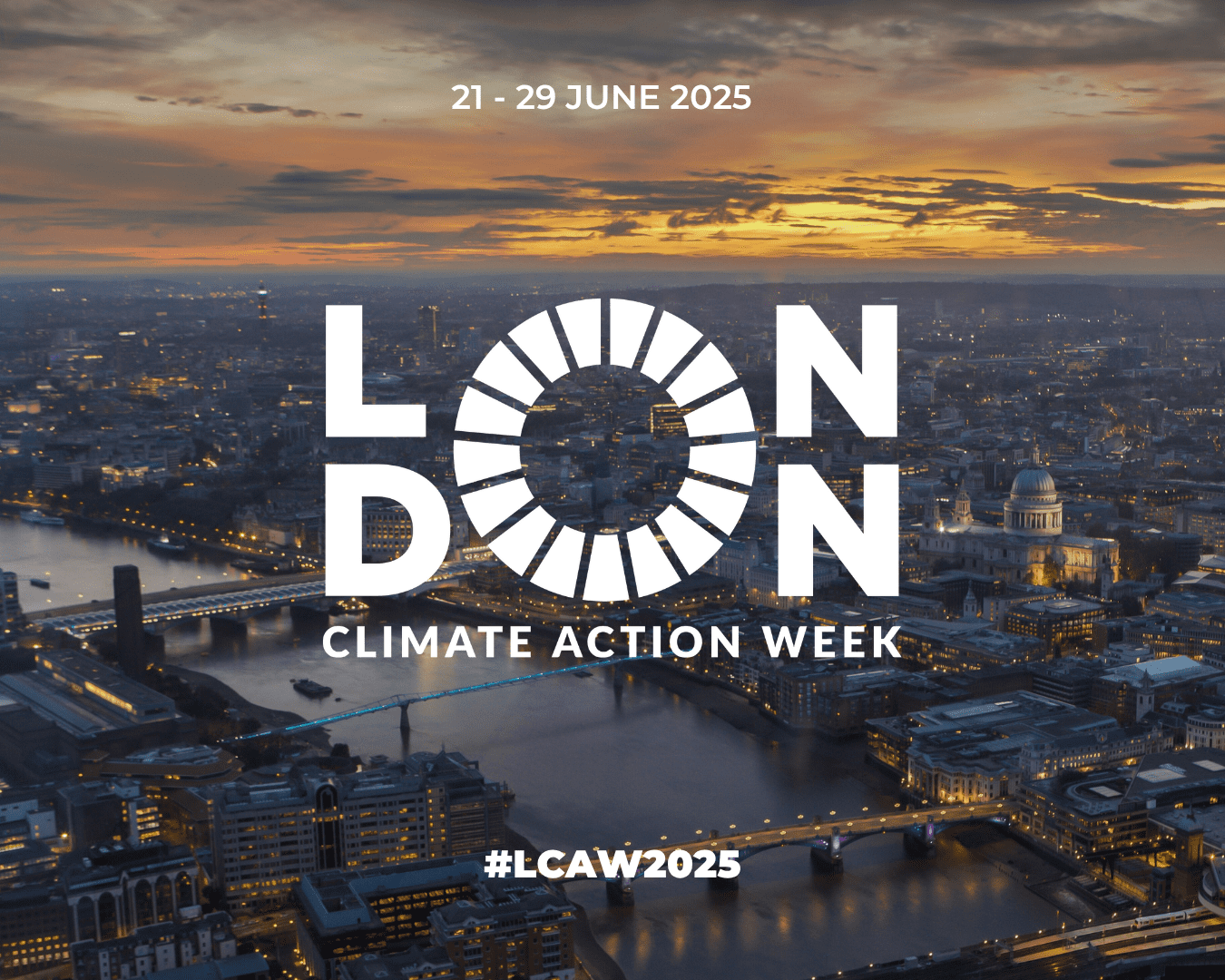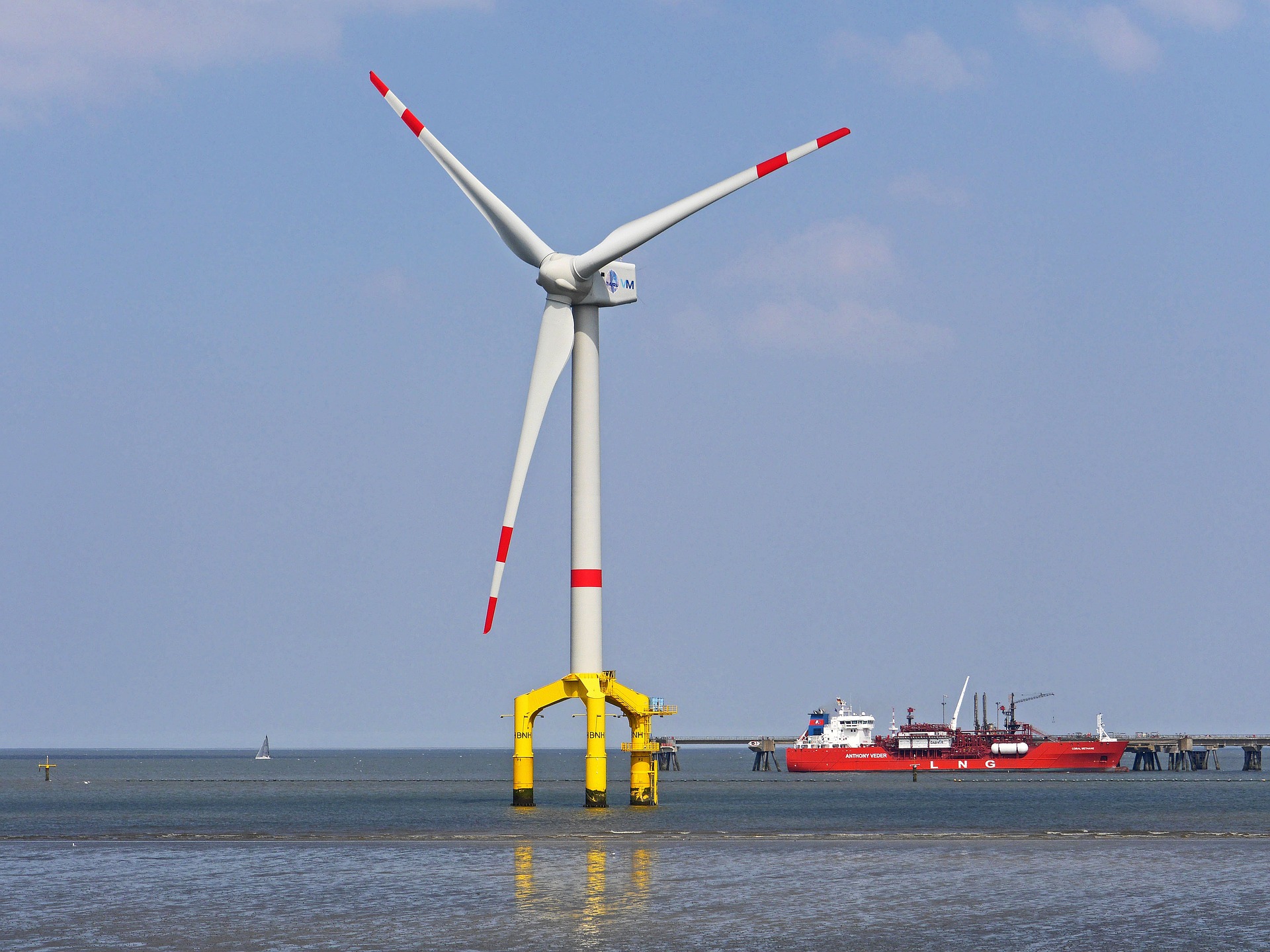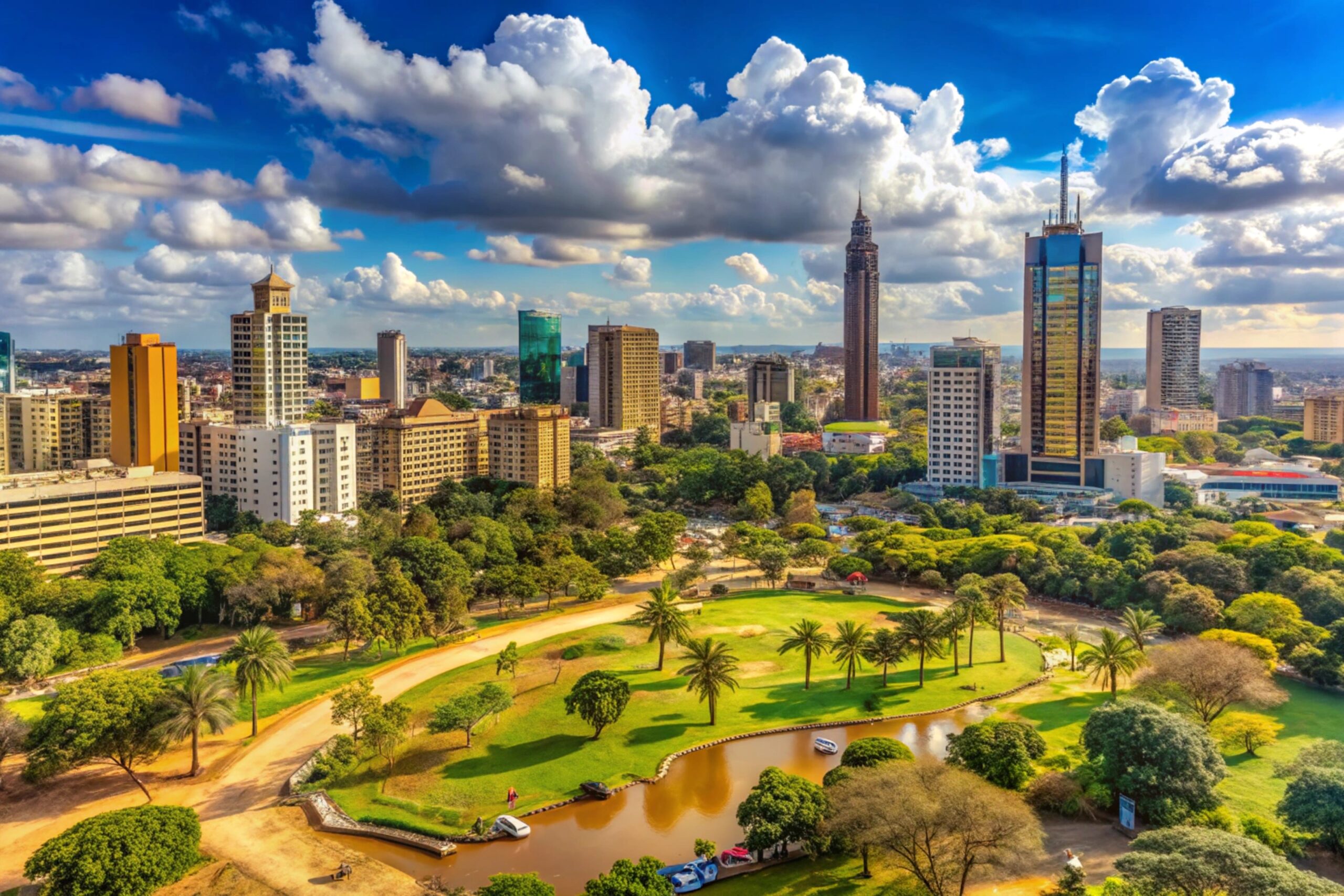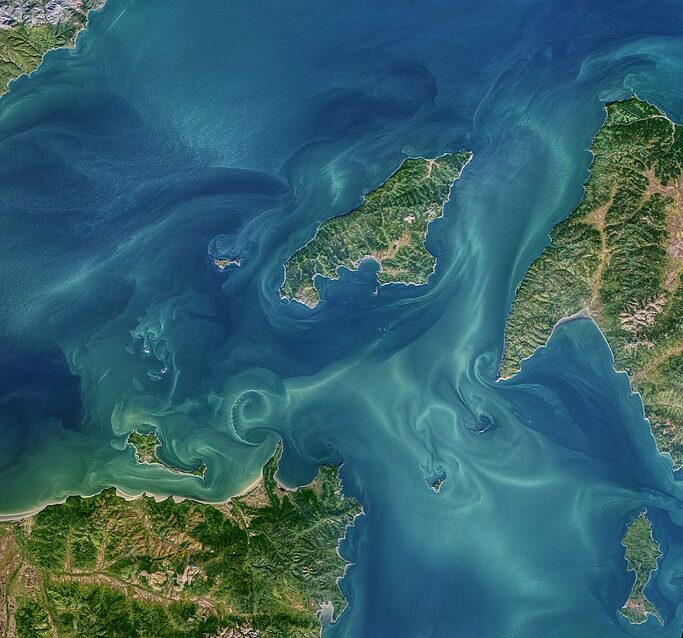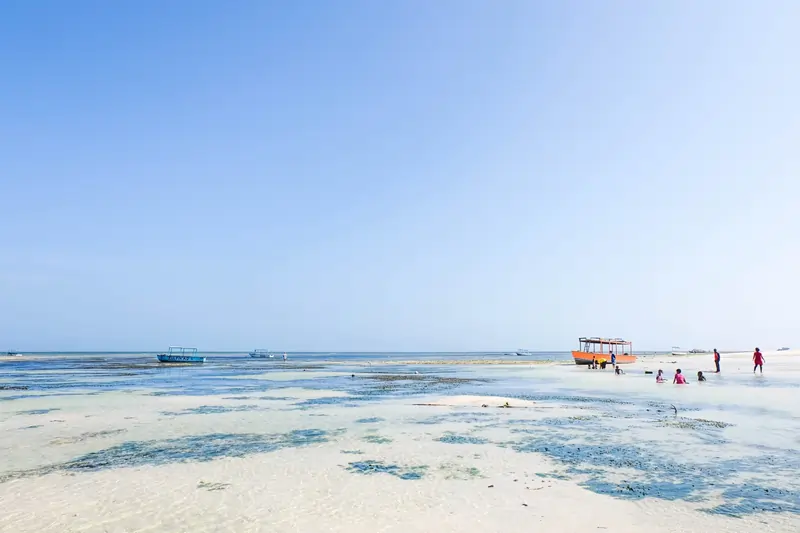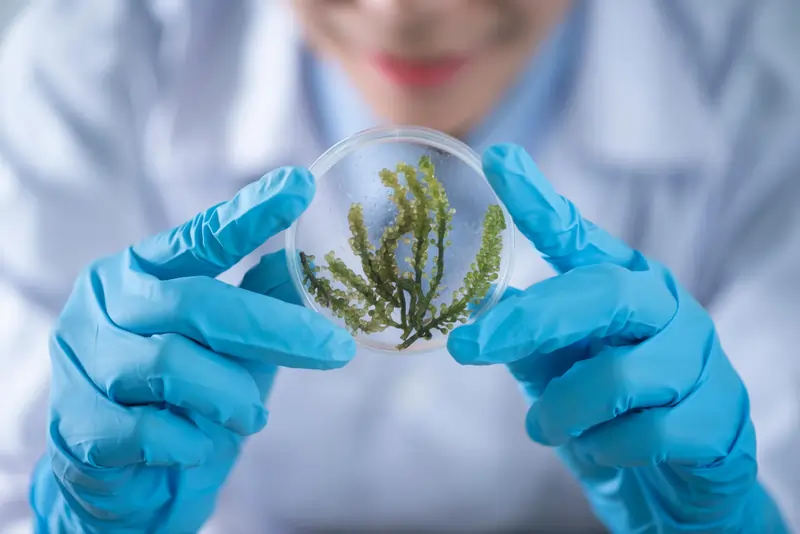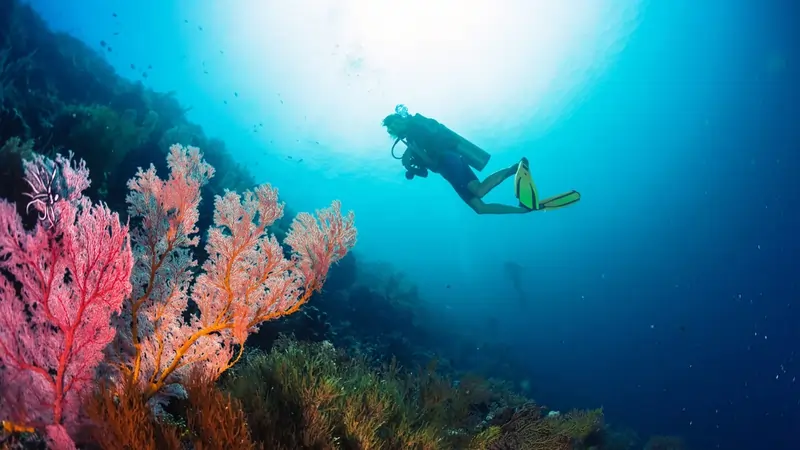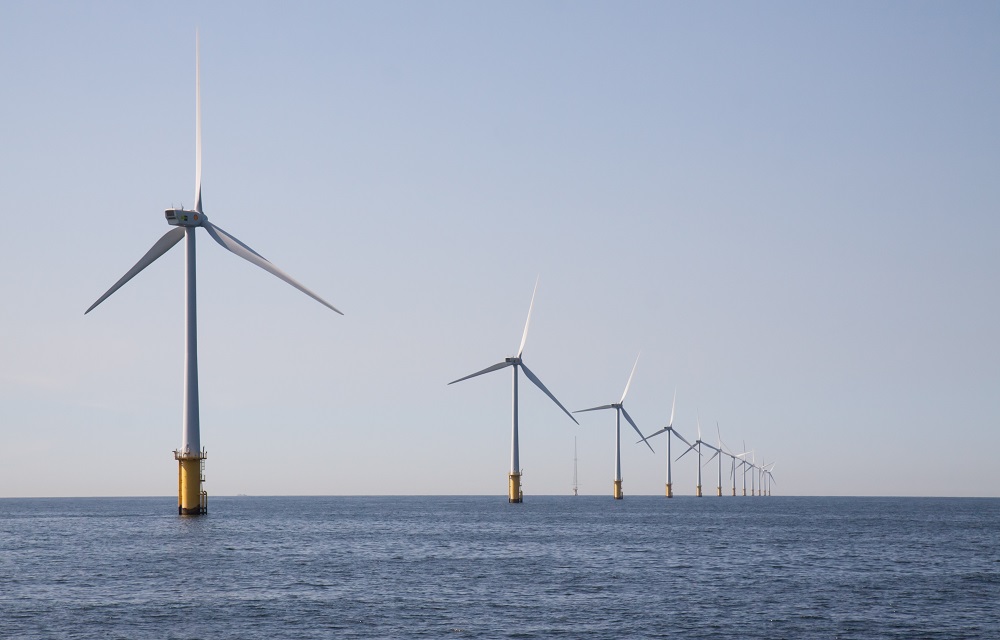
The only way we can achieve the goals of the Paris Agreement is through greater climate action by all countries. Ocean-based climate solutions can deliver up to 35% of the annual greenhouse gas emission cuts needed in 2050 to limit global temperature rise to 1.5°C.
These solutions include:
- Scaling ocean-based renewable energy
- Decarbonising ocean-based transport
- Conserving and restoring coastal and marine ecosystems
- Utilising low carbon food from the ocean
- Developing marine carbon dioxide removal and carbon capture and storage under the seabed
- Decarbonising ocean-based tourism
- Reducing offshore oil and gas

In 2019, Ocean Panel launched a ‘Call to Ocean-Based Climate Action’ at the UN Climate Action Summit in New York to outline a pathway towards greater action on ocean-based climate solutions.
While significant global progress has been made, the latest IPCC reports emphasise the gap that remains between ambition and action.
The Ocean Panel remains committed to ocean-based climate action and urges all actors to join them in advancing ambitious ocean-based solutions to support global efforts to urgently reduce greenhouse gas emissions.





